The Rhythm In Anything: Audio-Prompted Drums Generation with Masked Language Modeling
Comparisons vs. MelodyFlow
Below, we provide examples of the proposed TRIA and baseline MelodyFlow systems converting sound gestures to drum recordings. For these examples, we craft text timbre prompts for MelodyFlow that broadly correspond to TRIA's audio timbre prompts; this is because while TRIA allows timbre specification via an audio example, MelodyFlow requires a text description of the desired timbre. For TRIA, we use the 2-band adaptive variant detailed in the paper, while for MelodyFlow, we use target timestep 0.2.| Index | Timbre prompt Use this drum sound... |
Rhythm prompt Play this rhythm... |
TRIA | Timbre prompt (text) Use this drum sound... |
Rhythm prompt Play this rhythm... |
MelodyFlow |
|---|---|---|---|---|---|---|
| 1 | 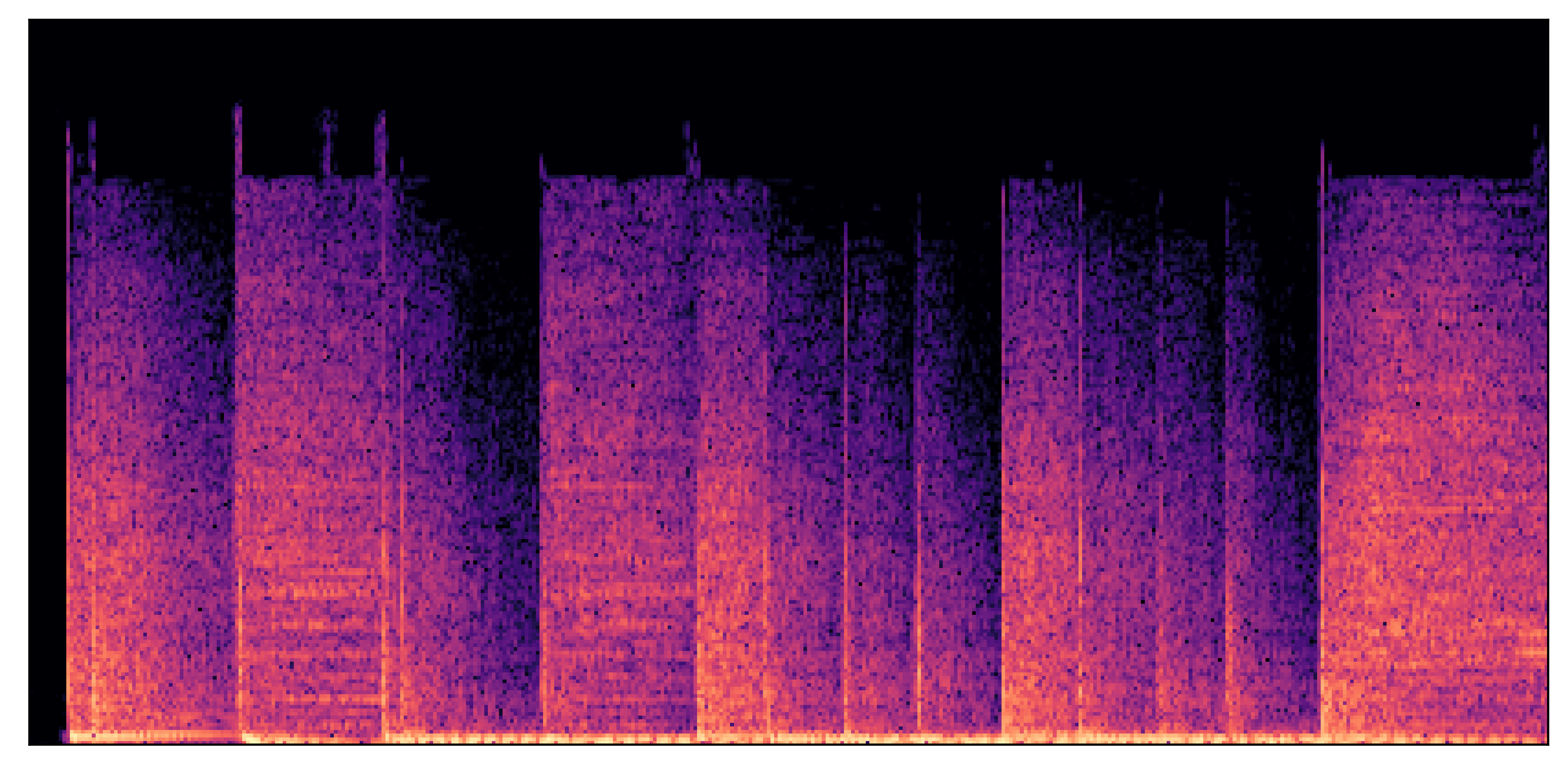 | 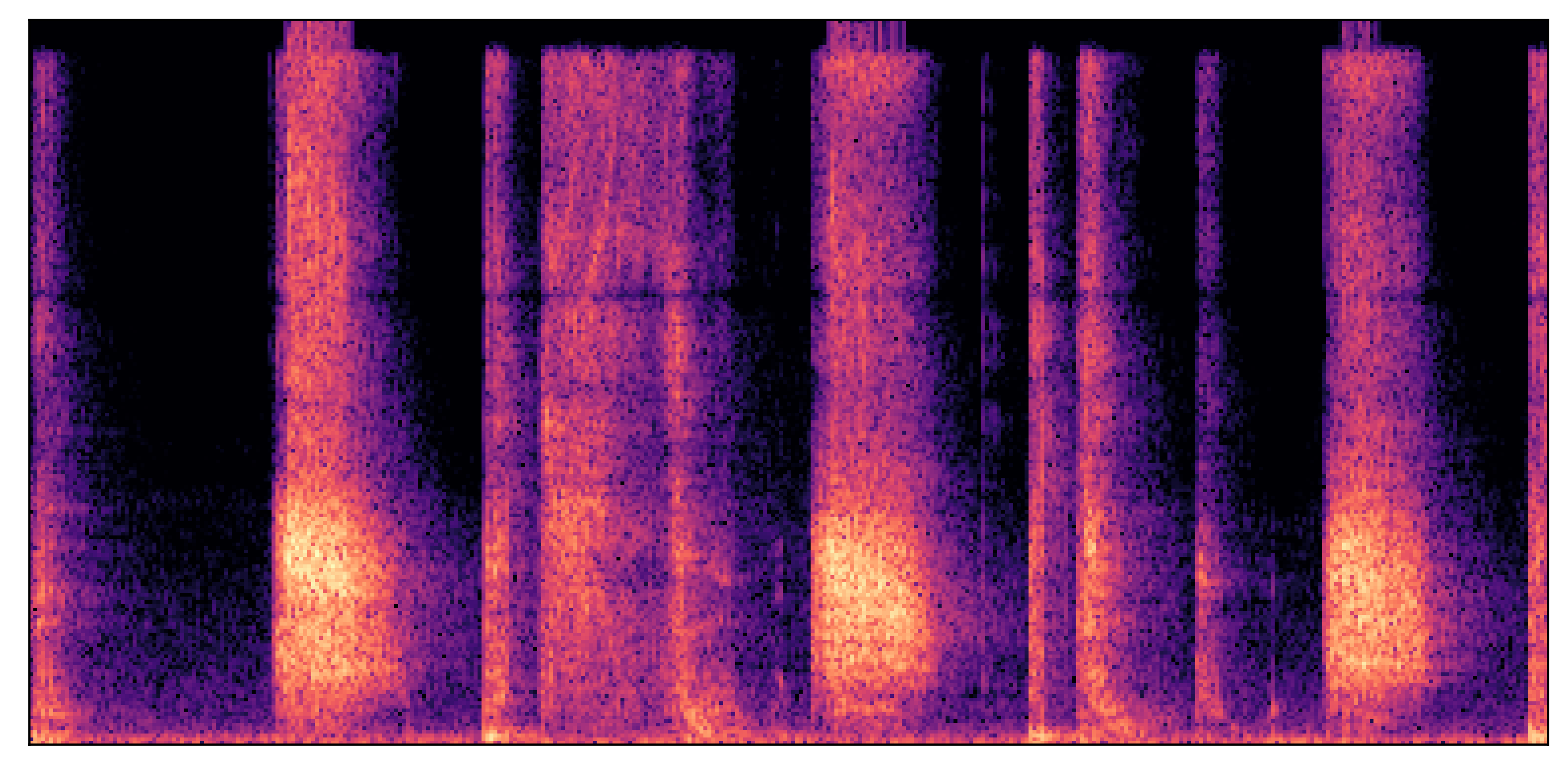 | 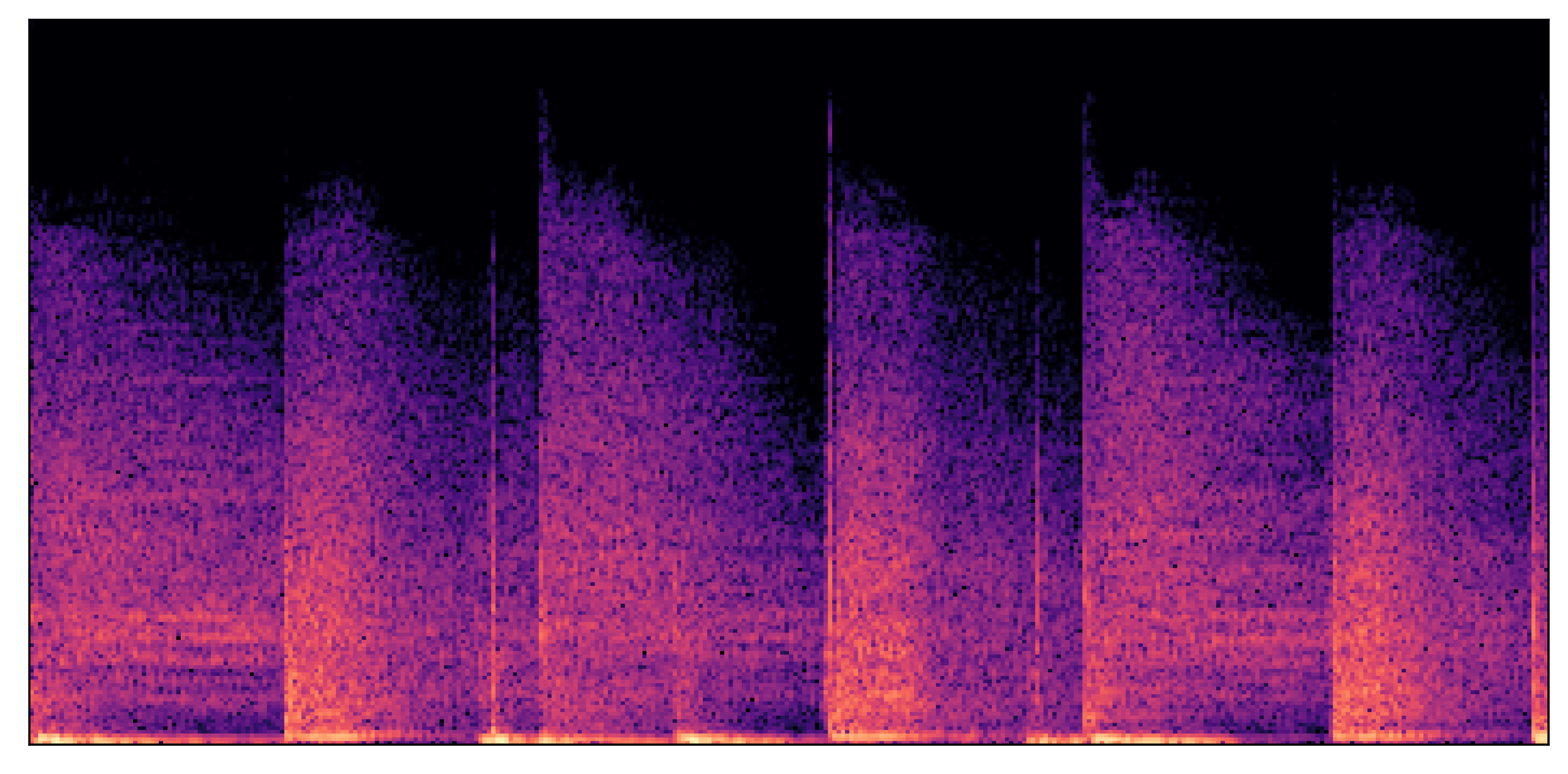 | a loud, acoustic, rock drumkit |  |  |
| 2 | 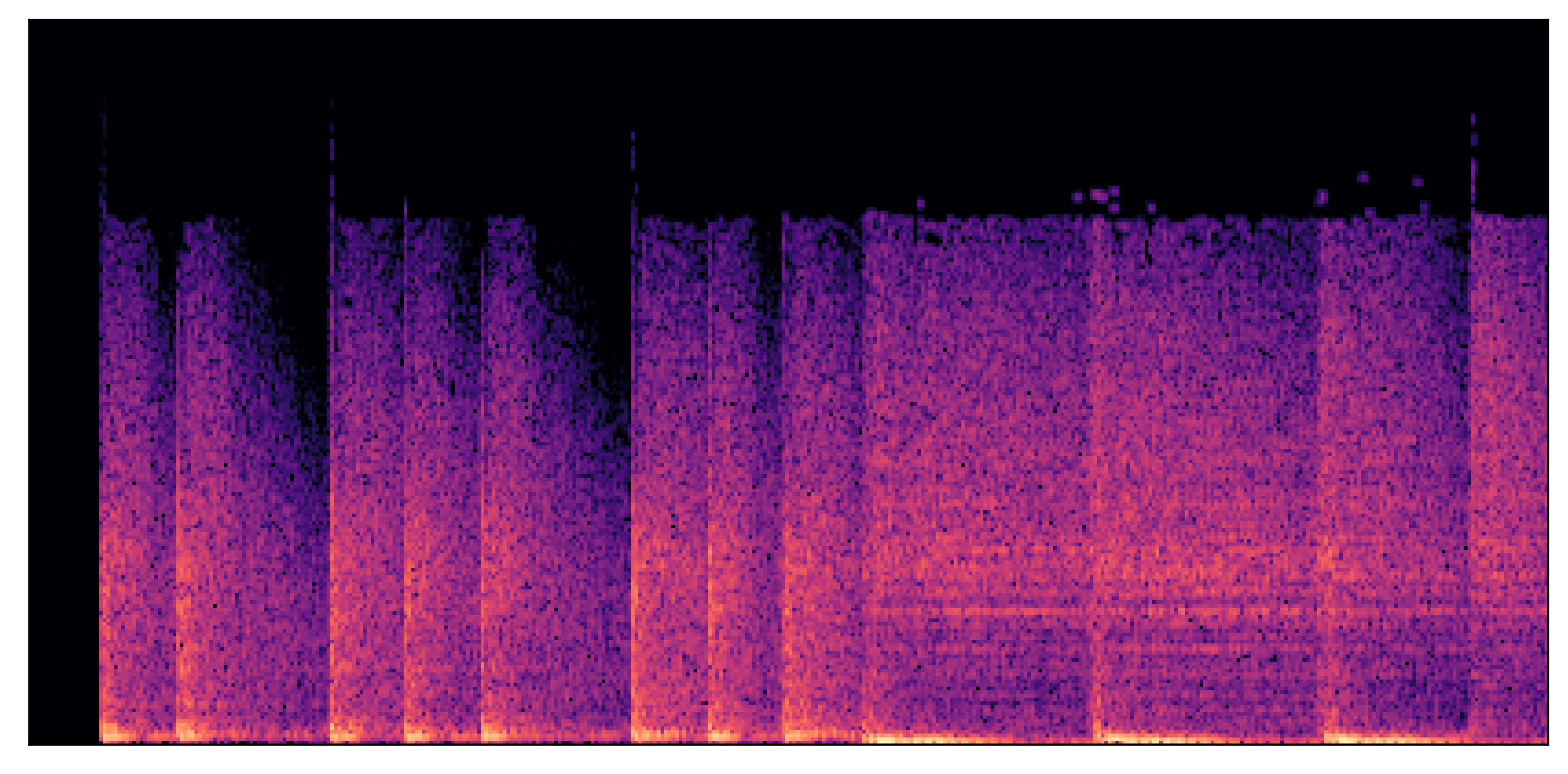 | 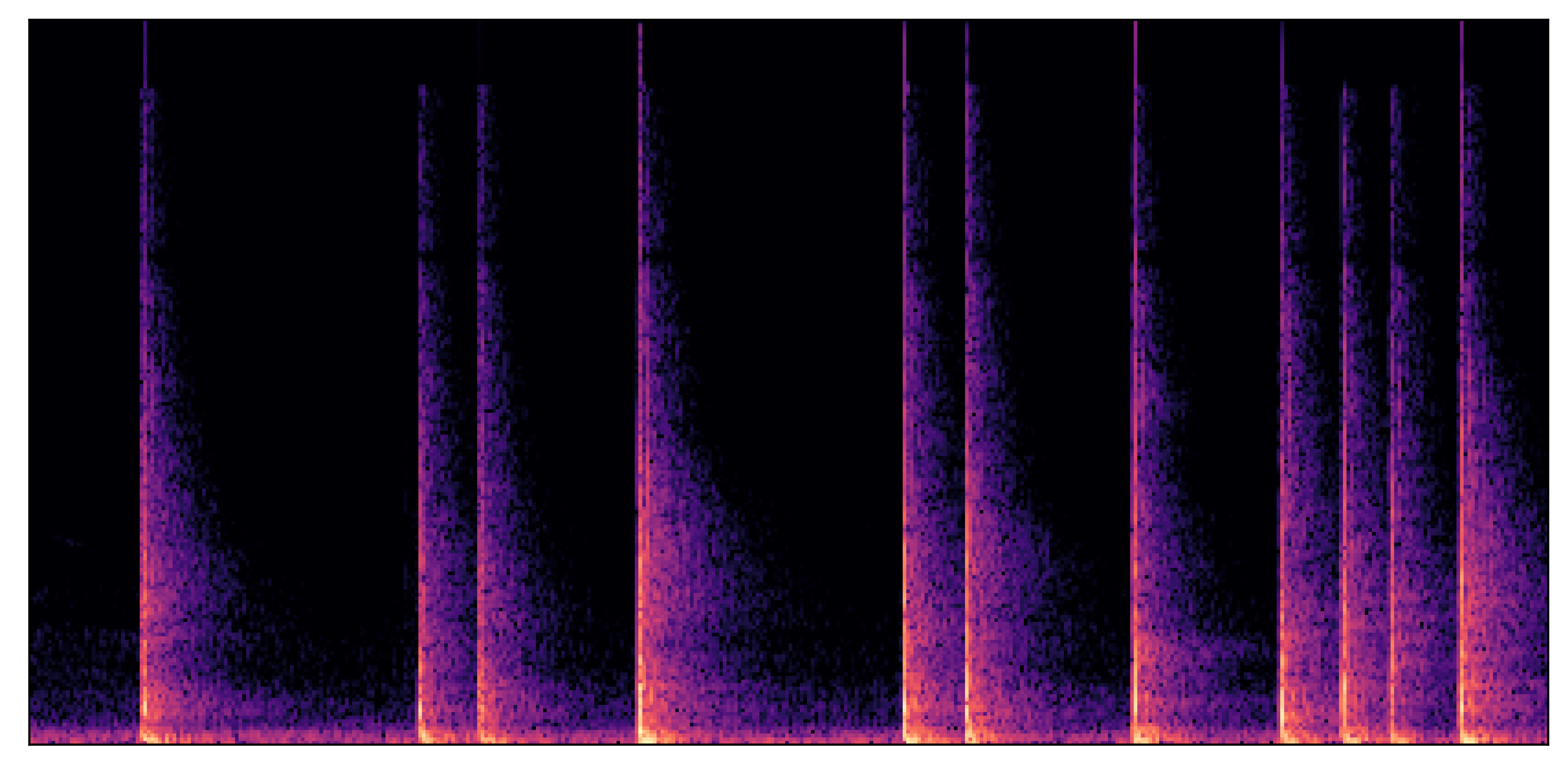 |  | an acoustic drumkit with kick, snare, hi-hat, and crash cymbal |  | 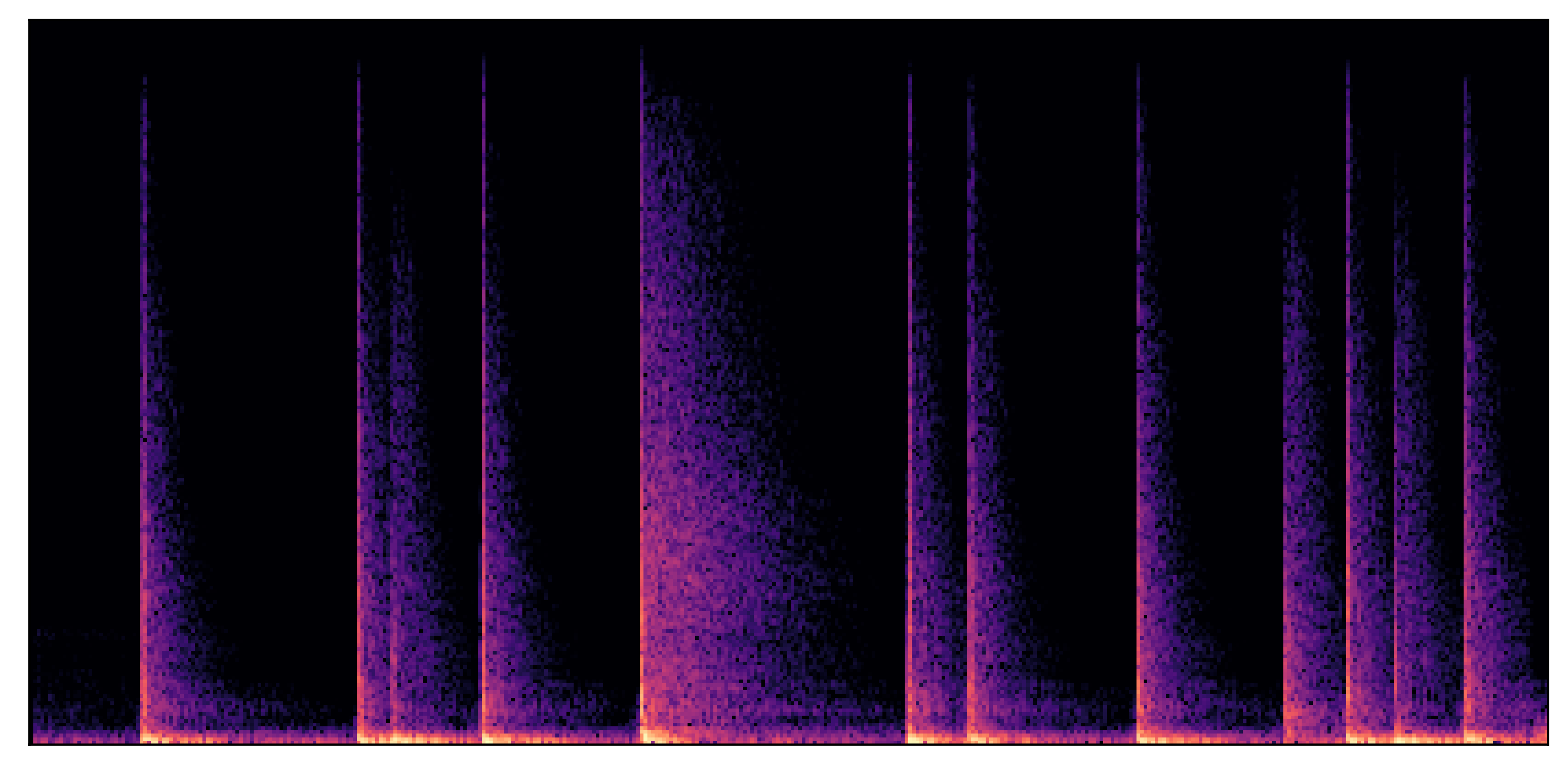 |
| 3 | 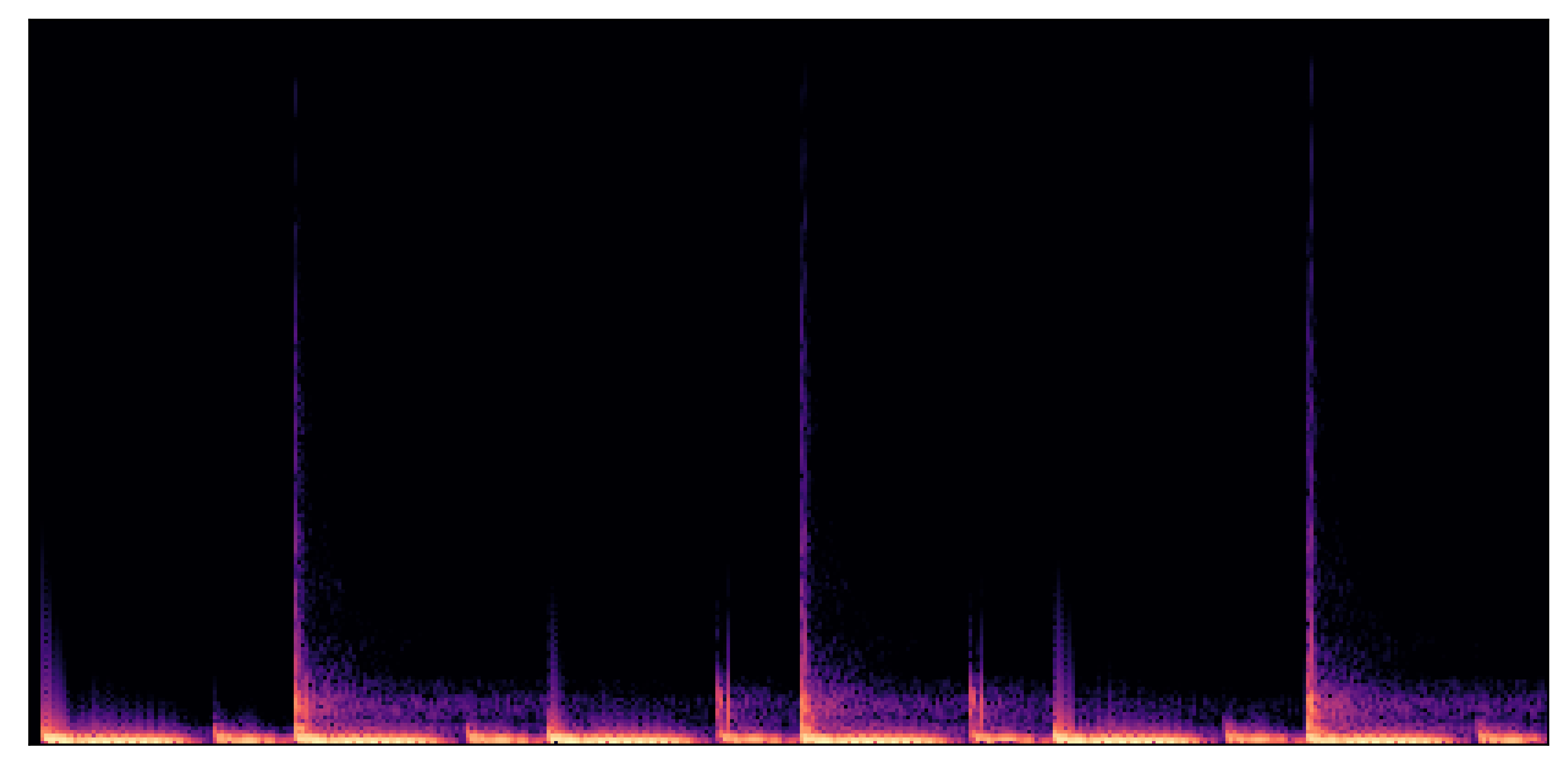 | 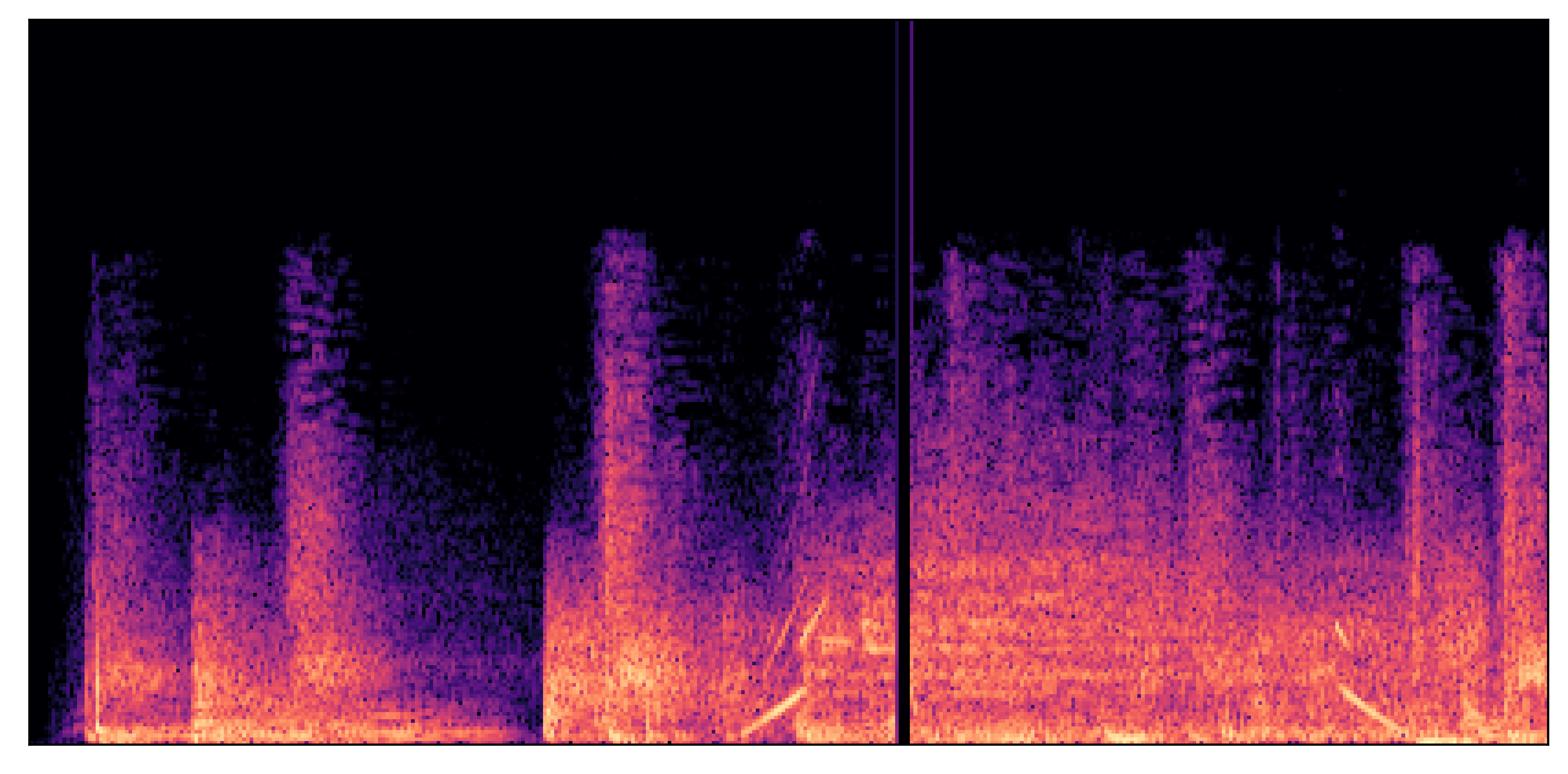 |  | a deep, muted, underwater electronic drumkit |  | 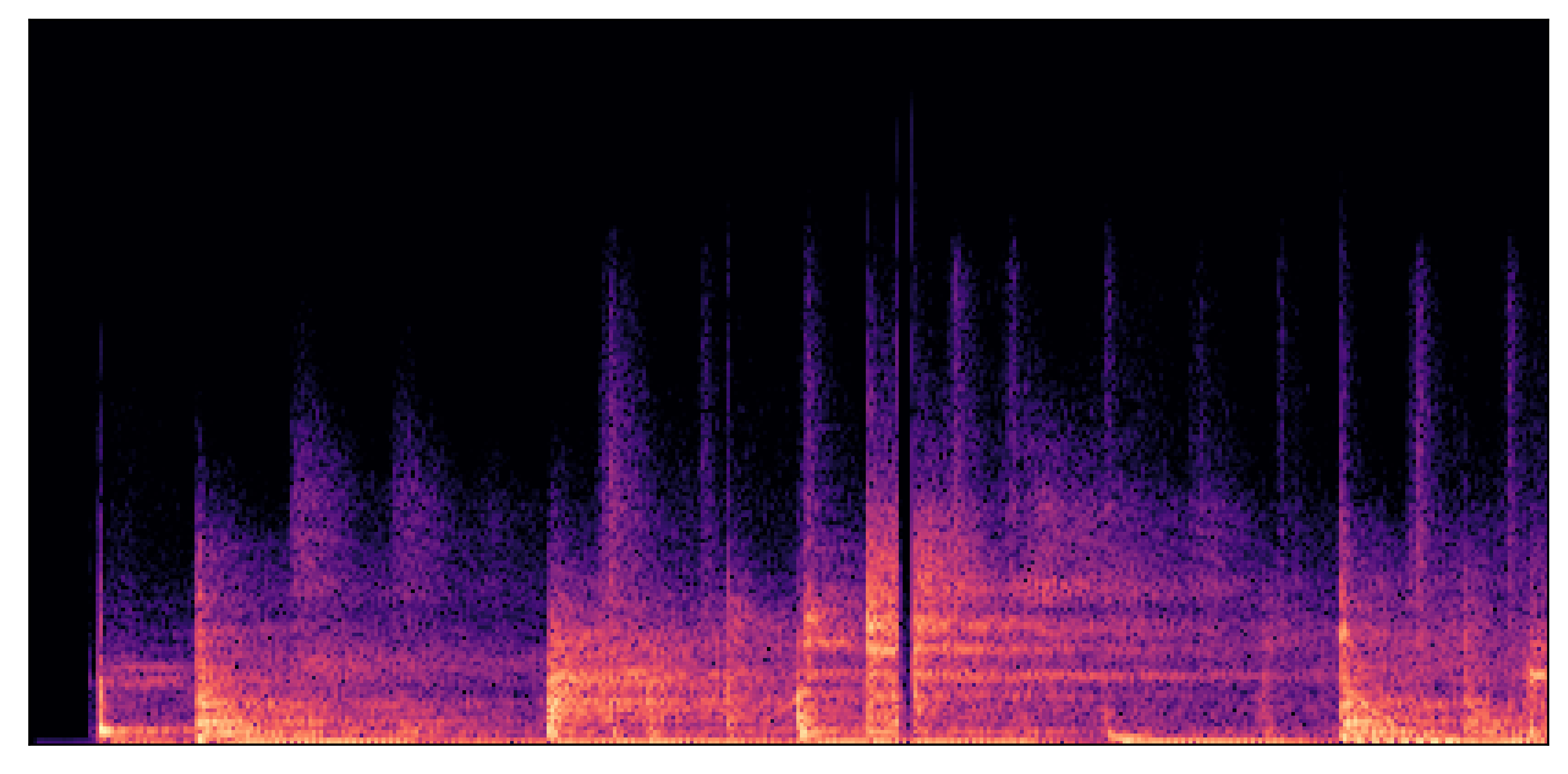 |
Figure 4
Below, we provide audio examples for the proposed TRIA and baseline MelodyFlow systems corresponding to Figure 4 in the paper. For TRIA, we use the 2-band adaptive variant detailed in the paper, while for MelodyFlow, we use target timestep 0.2.
We start with a beatboxing rhythm prompt consisting of alternating "kick" and "snare" vocalizations. We then construct three audio timbre prompts for TRIA, each containing the same synthesized kick drum and one additional percussive element: a "bongo," a "wood crack," or a "noise burst." Notably, while TRIA's training data is dominated by traditional drum kit elements such as snare and hi-hat, we choose percussive sounds that are represented sparsely or not at all. For MelodyFlow, we use the aforementioned descriptors ("bongo," "wood crack," "noise burst") as text timbre prompts.
TRIA successfully maps each timbre prompt onto the beatbox rhythm prompt by replacing "kick" vocalizations with a kick drum timbre and replacing "snare" vocalizations with the corresponding percussive element. This indicates that TRIA can distinguish between kick/snare vocalizations and select appropriate sound elements from within the timbre prompt to map onto these vocalizations. By contrast, MelodyFlow adheres much more closely to the spectral structure of the rhythm prompt rather than replacing the input vocalizations with the text-specified percussive elements (i.e. the output recordings still "sound like" beatboxing), indicating timbre leakage. While using a lower target timestep hyperparameter lessens leakage (see "Ablations" below), this results in poor adherence to the rhythm prompt.
Click on the spectrograms below to hear each audio clip.
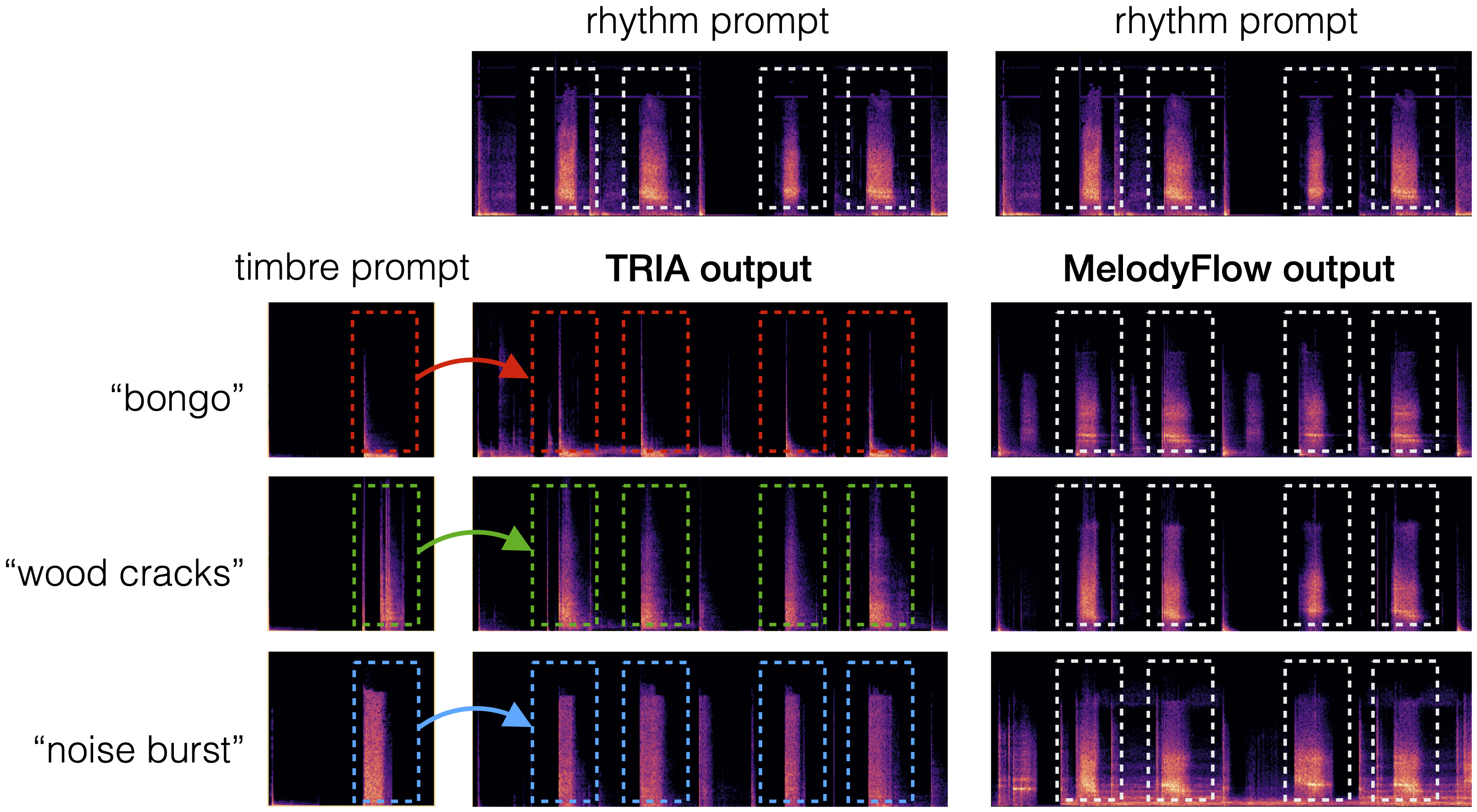
Ablations
Below, we provide examples of the proposed TRIA and baseline MelodyFlow systems converting sound gestures to drum recordings. Given a timbre prompt specifying the desired drum sound (an audio recording for TRIA, a text description for MelodyFlow) and a rhythm prompt specifying the desired rhythm, we present the outputs of the proposed and baseline systems. In the corresponding plots, timbre is illustrated by a spectrogram (top) and rhythm is illustrated by dualized rhythm features (bottom). In each row, the rhythm prompt is fixed across all evaluated systems, the audio timbre prompt is fixed across all TRIA variants, and the text timbre prompt is fixed across all MelodyFlow variants. Audio and text timbre prompts are sampled independently and are not meant to correspond.
Tapping (TapTamDrum Dataset) to Drums
| Index | Timbre prompt Use this drum sound... |
Rhythm prompt Play this rhythm... |
TRIA (2 bands) | TRIA (2 bands, non-adaptive) | TRIA (1 band) | TRIA (3 bands) | TRIA (4 bands) | Timbre prompt (text) Use this drum sound... |
Rhythm prompt Play this rhythm... |
MelodyFlow (timestep = 0.0) | MelodyFlow (timestep = 0.1) | MelodyFlow (timestep = 0.2) |
|---|---|---|---|---|---|---|---|---|---|---|---|---|
| 1 |  |  |  |  |  |  |  | spacious, reverberant acoustic drum set |  |  |  |  |
| 2 |  | 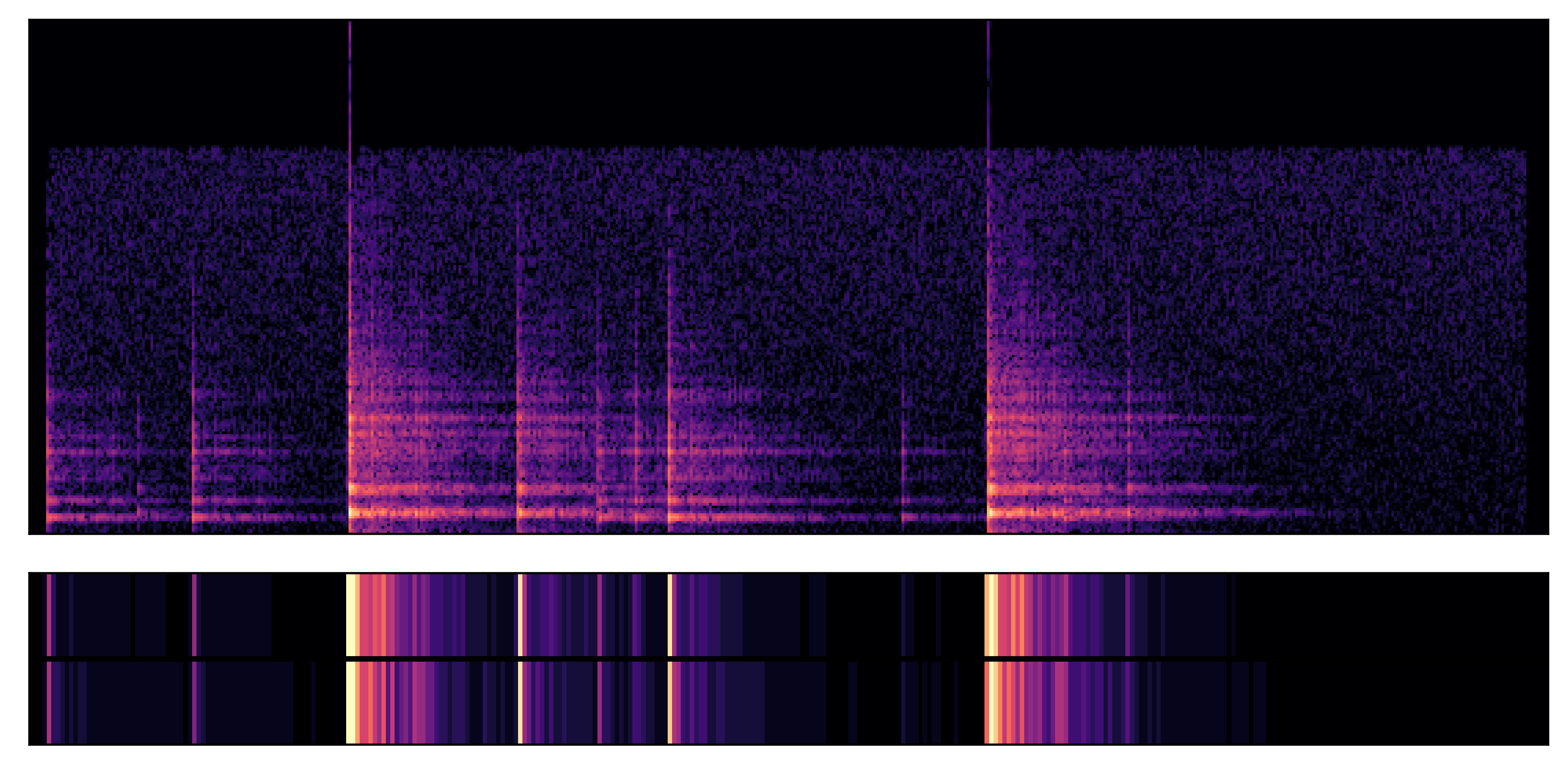 |  |  |  |  |  | balanced, neutral acoustic drum timbre |  |  |  |  |
| 3 |  |  |  |  |  |  |  | vibrant, digital drum sounds with fast decay |  |  |  |  |
Beatboxing (AVP Dataset) to Drums
| Index | Timbre prompt Use this drum sound... |
Rhythm prompt Play this rhythm... |
TRIA (2 bands) | TRIA (2 bands, non-adaptive) | TRIA (1 band) | TRIA (3 bands) | TRIA (4 bands) | Timbre prompt (text) Use this drum sound... |
Rhythm prompt Play this rhythm... |
MelodyFlow (timestep = 0.0) | MelodyFlow (timestep = 0.1) | MelodyFlow (timestep = 0.2) |
|---|---|---|---|---|---|---|---|---|---|---|---|---|
| 1 | 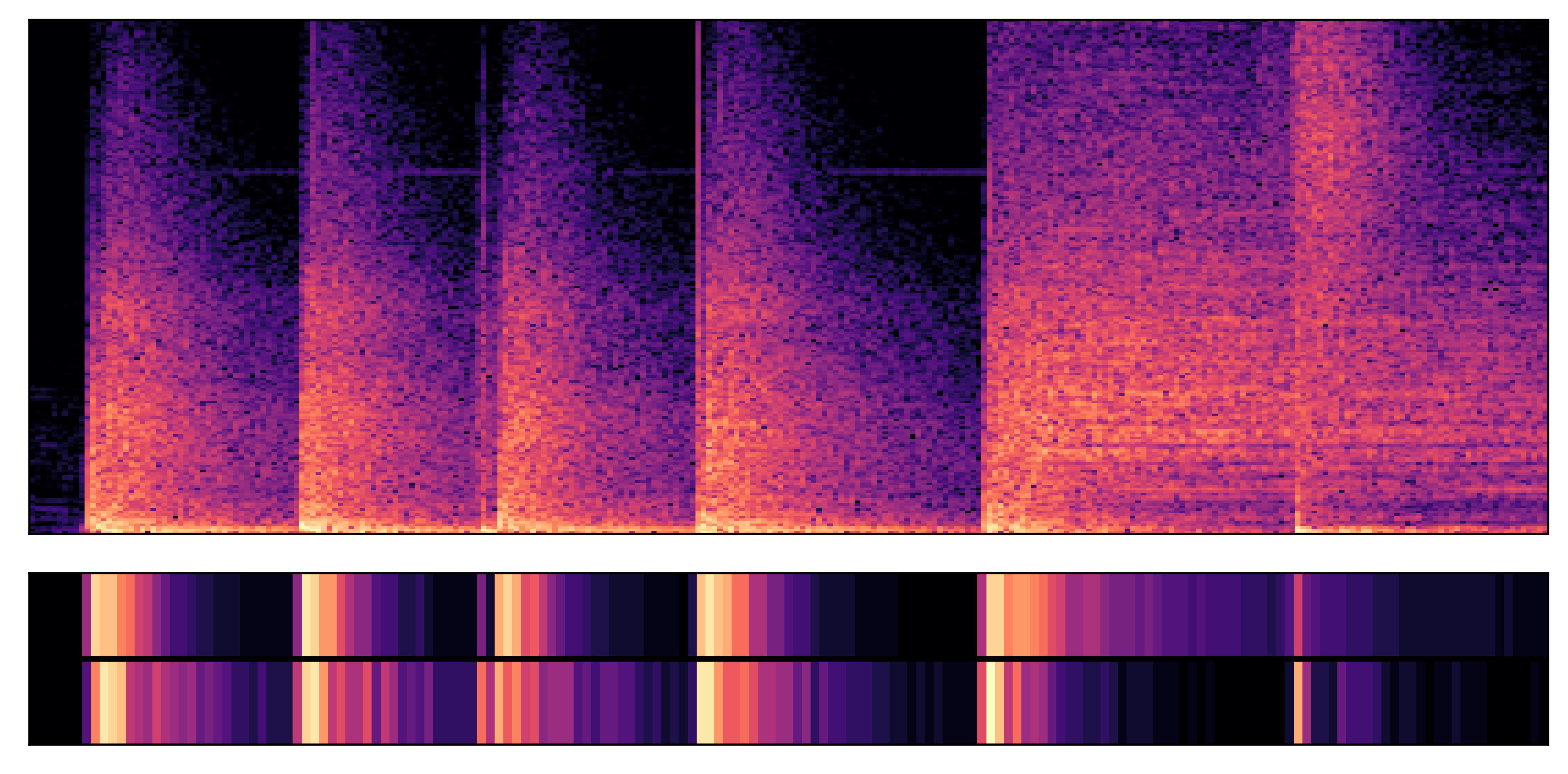 |  |  |  |  |  |  | rounded, organic electronic drums |  |  |  |  |
| 2 | 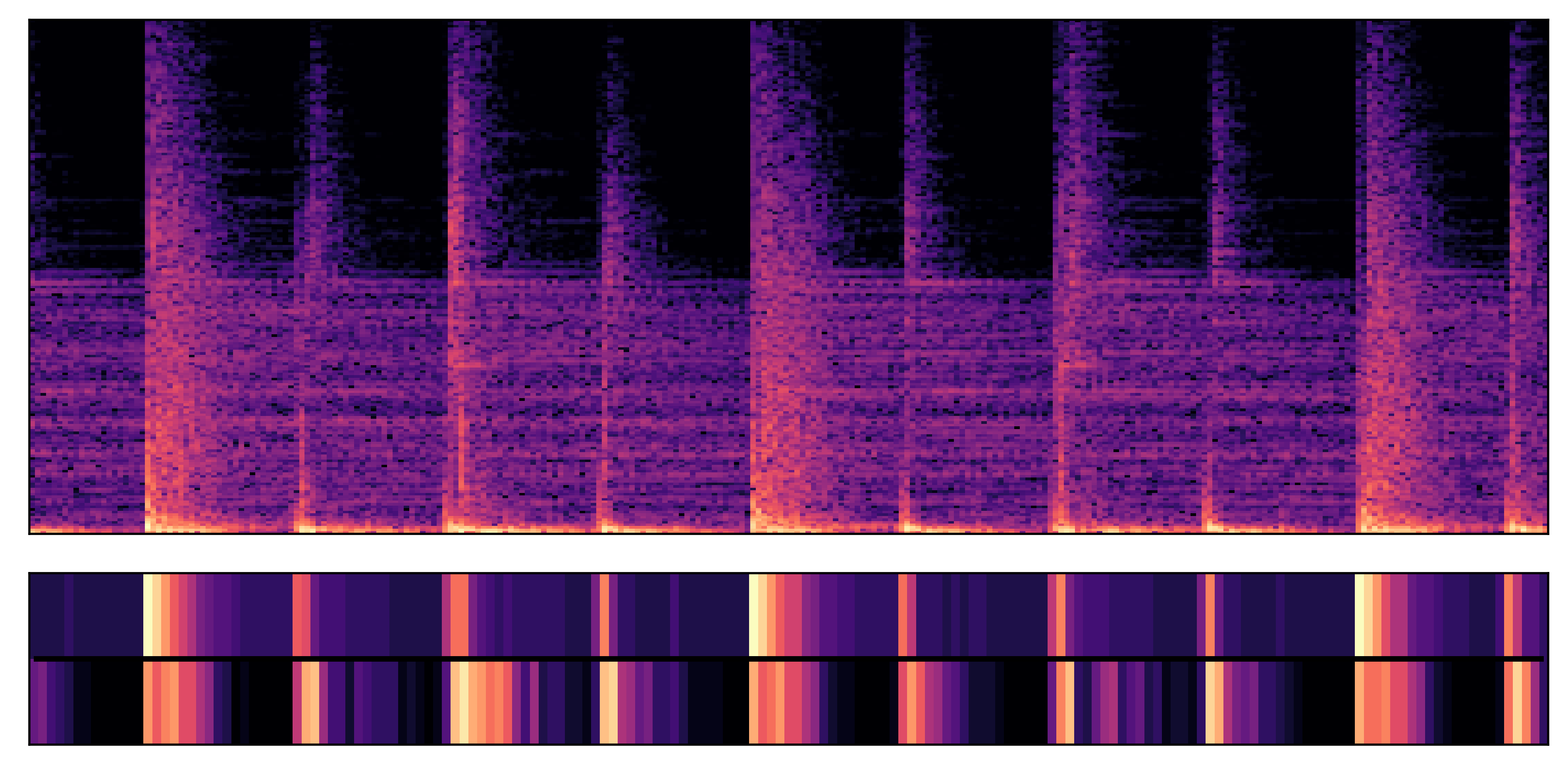 |  |  |  |  |  |  | subtle, understated acoustic drums |  |  |  |  |
| 3 |  |  |  |  |  |  |  | dense, compressed electronic drum timbres |  |  |  |  |
Text Timbre Prompts
Below, we provide the 50 text timbre prompts used for our objective evaluation, and the 8 text timbre prompts used for our subjective evaluation.
Objective Evaluation
Timbre prompts were generated using GPT-4.5 with the following prompt: "Generate 50 short descriptions of the timbre of a drum kit recording. The drum kit may be acoustic or electric, natural or synthetic. Each description should be formatted as a short sentence or phrase, e.g. "a crisp, bright acoustic drum kit". Try to make each description distinct."
- a crisp, bright acoustic drum kit
- deep, resonant acoustic drums with warm sustain
- punchy, tight electronic drum samples
- raw, gritty analog-sounding drum machine
- smooth, polished synthetic drum textures
- lo-fi, vintage-sounding acoustic drums
- sharp, metallic electronic percussion
- organic, mellow acoustic kit with rich tones
- dark, muted acoustic drum tones
- snappy, modern electro-acoustic hybrid kit
- dense, compressed electronic drum timbres
- roomy, ambient acoustic drums with natural decay
- dry, minimalistic electronic drum kit
- saturated, retro synthetic drum sounds
- thumping, powerful acoustic kick and snare
- crisp, synthetic drums with airy highs
- warm, round acoustic drums with gentle attack
- bright, glassy-sounding electronic percussion
- heavy, aggressive acoustic drum presence
- clear, transparent electronic drum timbres
- soft, brushed acoustic kit with intimate texture
- harsh, industrial electronic drum aesthetics
- balanced, neutral acoustic drum timbre
- vibrant, digital drum sounds with fast decay
- rich, woody-sounding acoustic kit
- synthetic, futuristic drum textures with sharp transients
- thick, bass-heavy electronic percussion
- subtle, understated acoustic drums
- metallic, bell-like synthetic drum hits
- warm, analog electronic drum sounds
- airy, open acoustic drum recording
- heavy, punchy synthetic kick and snare
- dull, subdued acoustic kit with lo-fi charm
- shimmering, high-frequency electronic percussion
- rounded, organic electronic drums
- tight, controlled acoustic drum tones
- crisp, biting electronic drum samples
- spacious, reverberant acoustic drum set
- coarse, gritty synthetic drum textures
- clean, precise digital percussion
- raw, unprocessed acoustic drum tones
- hypnotic, rhythmic electronic drum grooves
- naturalistic, earthy acoustic drums
- synthetic drums with icy, crystalline clarity
- boomy, cavernous acoustic drum ambience
- slick, polished electronic drum production
- dry, vintage-inspired acoustic kit recording
- metallic, edgy synthetic percussion sounds
- lush, saturated electronic drum timbre
- gentle, soft acoustic drums with airy resonance
Subjective Evaluation
Timbre prompts describing acoustic drum kits were selected from the above set.
- a crisp, bright acoustic drum kit
- deep, resonant acoustic drums with warm sustain
- organic, mellow acoustic kit with rich tones
- dark, muted acoustic drum tones
- roomy, ambient acoustic drums with natural decay
- thumping, powerful acoustic kick and snare
- warm, round acoustic drums with gentle attack
- heavy, aggressive acoustic drum presence